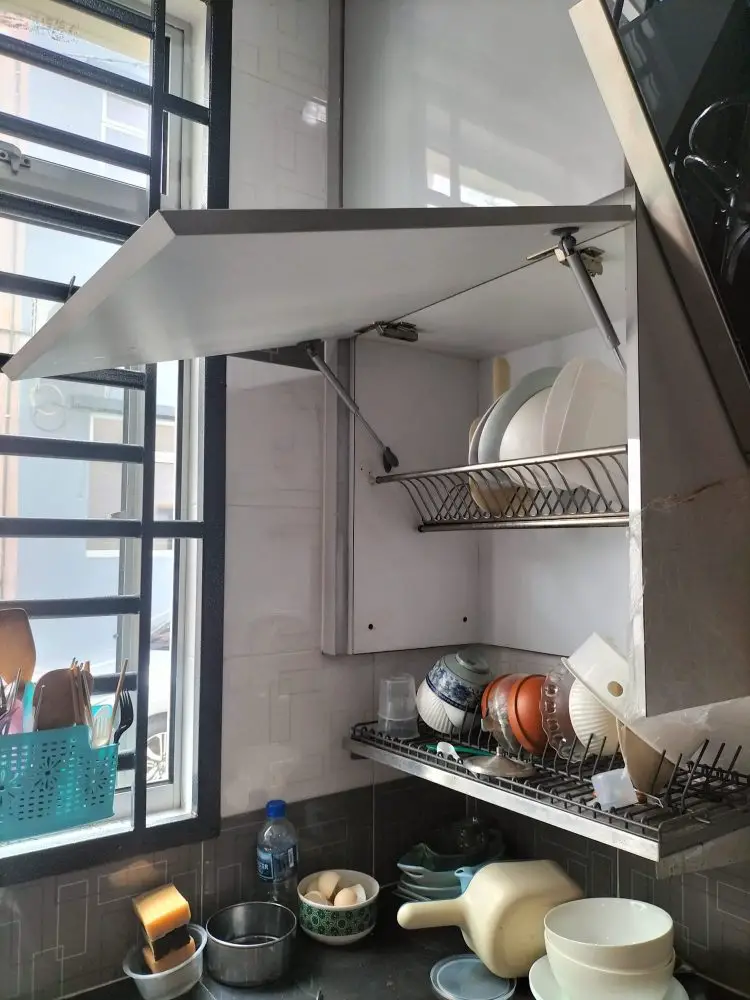How to Install Gas Strut / Hydraulic Rod Cabinet Support
Gas struts, commonly referred to as lifters, hinges, or gas actuators, provide the flexibility to customize the utilization of furniture according to your precise requirements. Primarily, these gas struts find application in upper kitchen cabinets where they are positioned horizontally. Unlike traditional furniture hinges that demand the entire door to be tilted laterally when accessing cabinet contents, gas struts allow a simple tilting of the front section in an upward direction (or downward for base units). Curious about the purposes of gas struts and the accurate methods for their installation and measurement in furniture? Delve into the subsequent text to gather comprehensive insights.
What is Gas Strut / Hydraulic Rod For ?
Gas struts / Hydraulic Rod have gained popularity as essential furniture accessories, using a gas mechanism to keep cabinet fronts stable after tilting without manual support. They find wide use in kitchen cabinets, room dividers, and various other furniture types, including under-floor and top-mounted cabinets, simplifying access to stored items. These struts offer easy and secure movement for opening and closing panels, with simple assembly, making them a cost-effective and user-friendly .
How purchase the correct gas struts / Hydraulic Rod?
You are able to purchase gas strut / hydraulic rod at your local DIY Store or you can purchase online at Shopee , Lazada , Taobao etc
Selecting suitable gas struts for furniture involves various considerations:
- Size and Measurements: Begin by measuring the furniture, such as a kitchen cabinet, where the gas struts will be installed. Accurate measurements of the furniture front’s width and length are crucial.
- Material and Thickness: Take into account the type of material used for the furniture, like MDF, and its thickness (e.g., 12 mm), as this affects the gas strut’s compatibility and strength.
- Weight of the Door: Consider the total weight of the furniture door, as it influences the gas strut’s lifting capacity.
- Desired Lift Angle: Decide on the desired lift angle for the furniture front, typically 75 degrees, 90 degrees, or 110 degrees.
- Gas Lift Force Calculation: With the above data, calculate the optimal gas lift force (measured in Newtons) for your specific application. For example, a 90-degree lift angle for a 1.8 kg, 300 mm high front would require a 60 N gas strut, while a heavier 3 kg, 400 mm high glass front would need at least a 120 N gas strut.
- Matching the Strength: Refer to available resources, such as tables, to find suitable gas strut strength based on the measurements, weights, and desired lift angle. Pay attention to the manufacturer’s specifications, as gas technology can vary.
- Consider Heavy or Wide Fronts: For wider fronts exceeding 400 mm width or exceptionally heavy doors, it’s advisable to install two gas struts – one on each side – for balanced support.
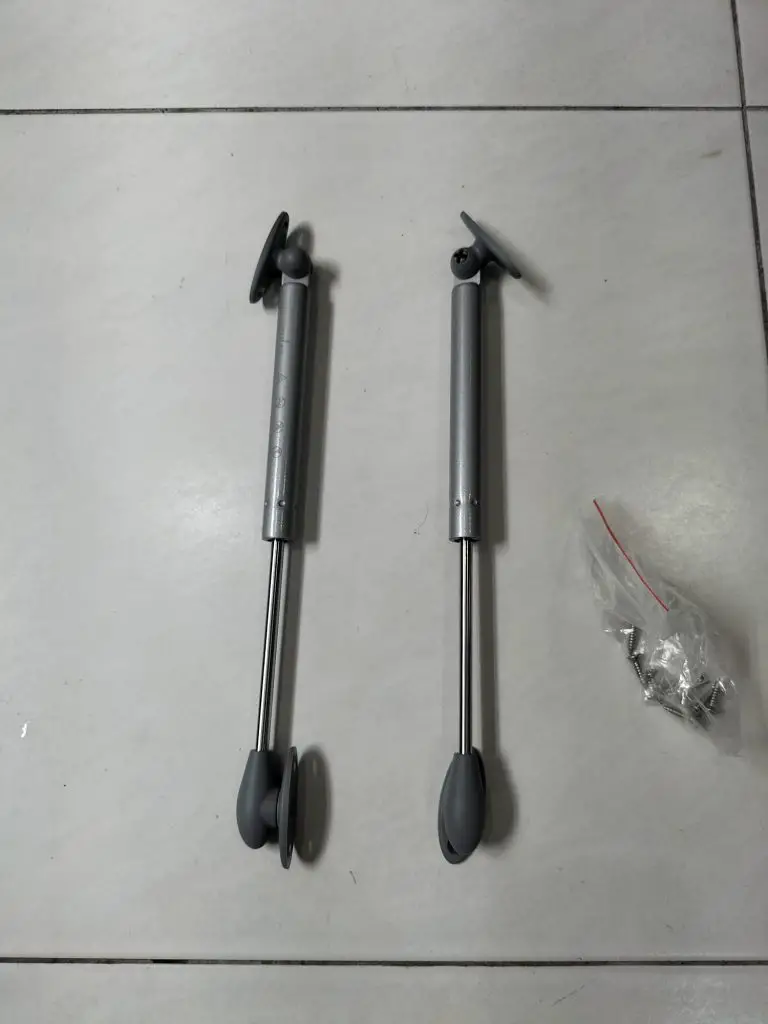
Replacing My Faulty Gas Struts / Hydraulic Rod
How To Replace Faulty Gas Strut / Hydraulic Rod Support for Kitchen Cabinet
Step 1
Purchase the Correct Size of Gas Strut / Hydraulic Rod Support ( Refer the on top article on how to select the appropriate Gas Struct / Hydraulic Rod Support
Step 2
Prepare 1 electric drill and 1 Phillip head screw driver
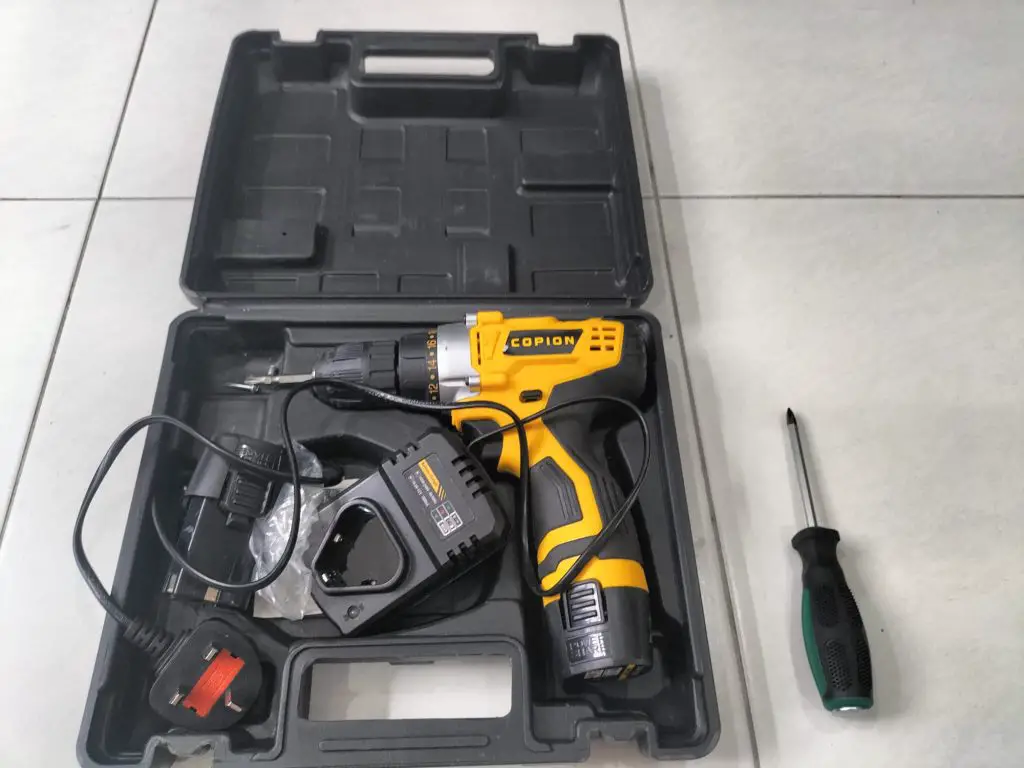
Step 3
Create a makeshift support for the cabinet cover by utilizing an electrical cable and a knob. Attach these items temporarily to the window to establish a provisional support system.
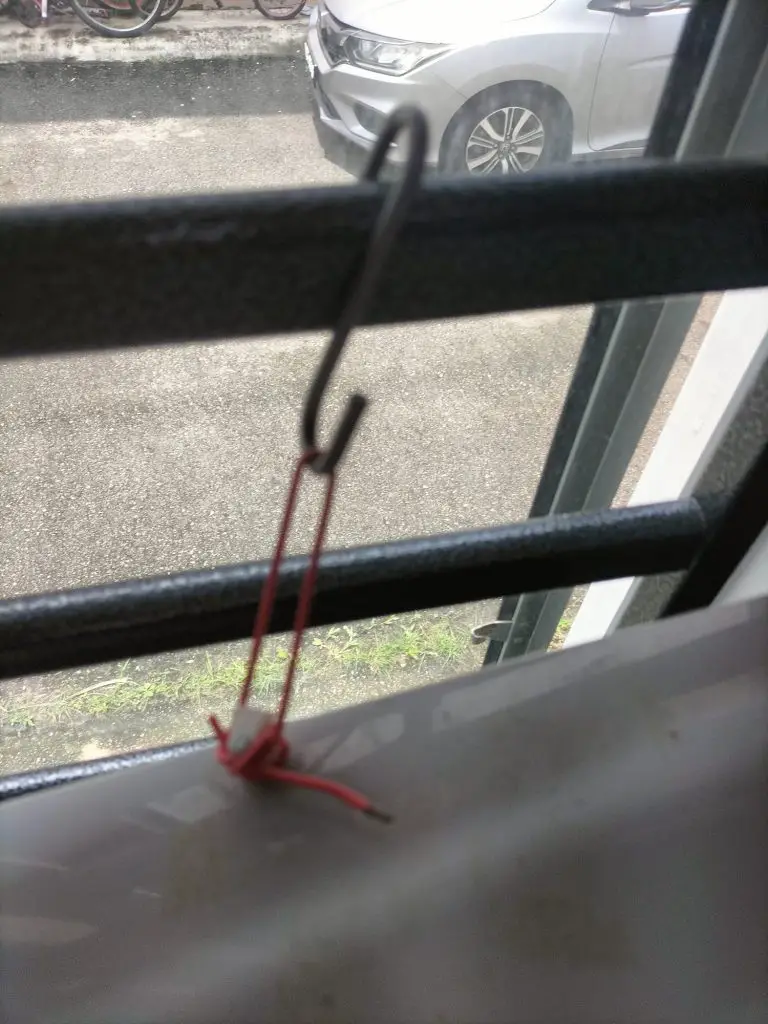
Step 4
Take out the initial gas strut or hydraulic rod support you plan to replace, and then proceed to install the new one.
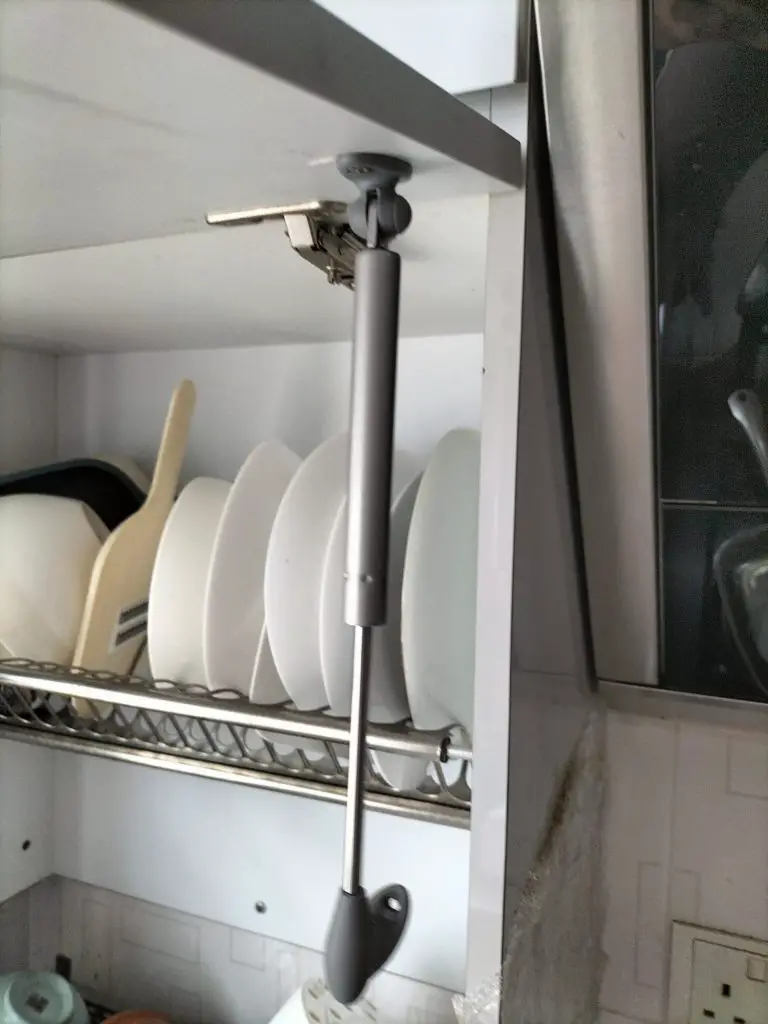
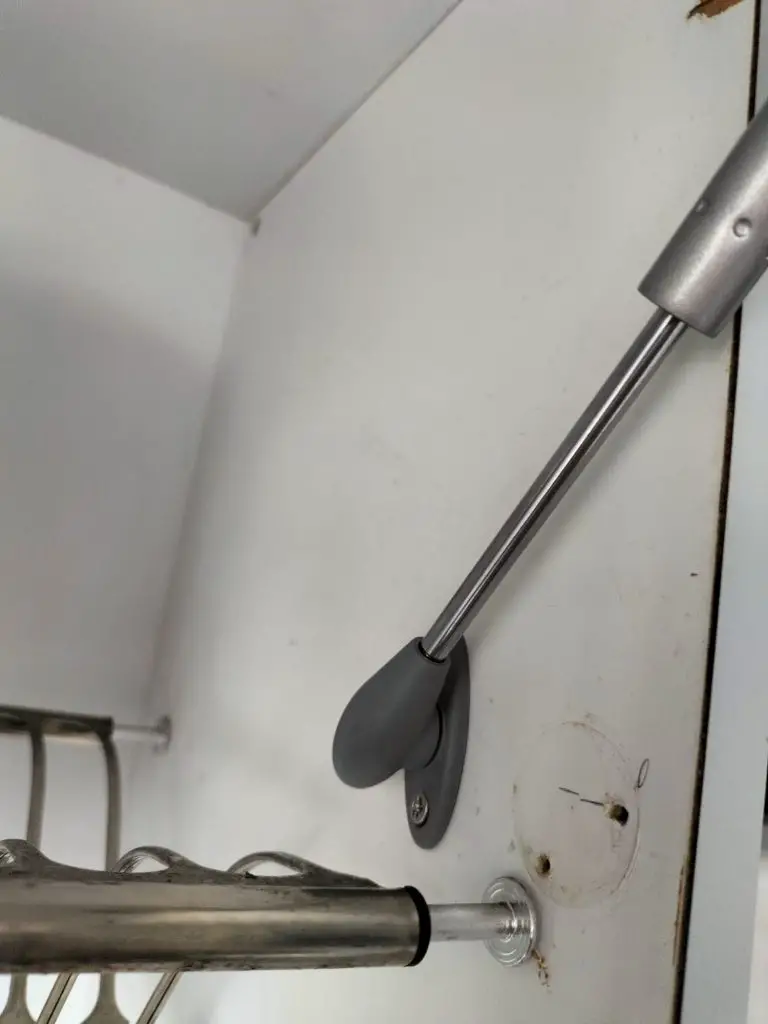
Step 5
Replace the Remaining Gas Strut / Hydraulic Rod
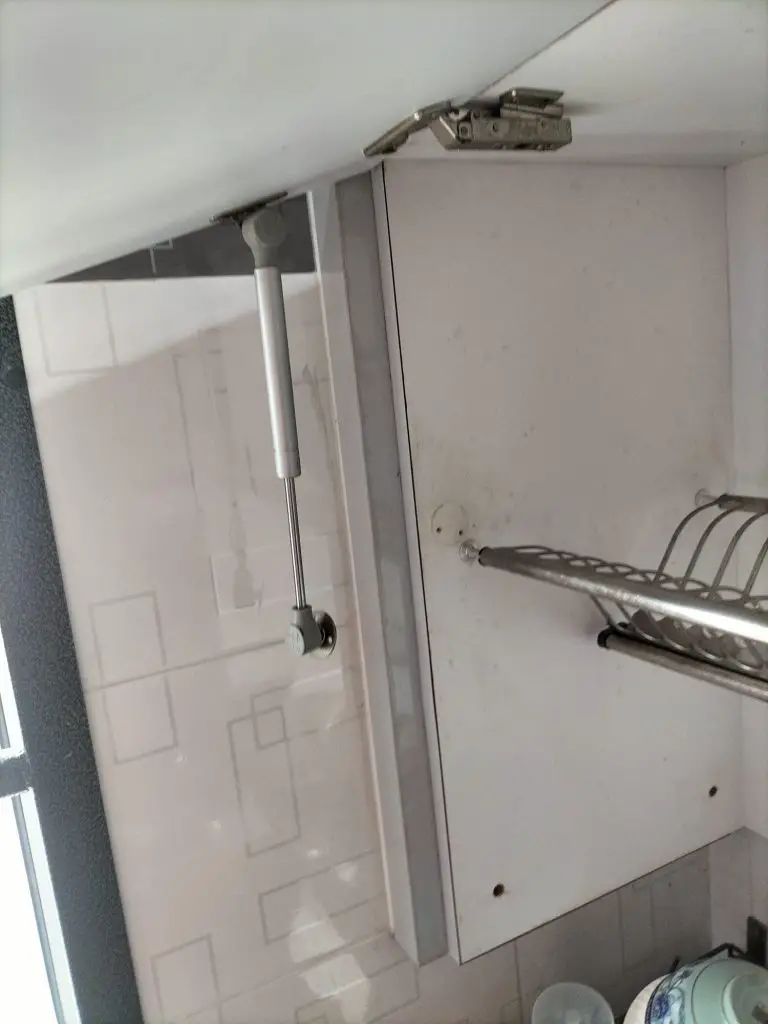
Check Out How to Install Solar Charge Controller
